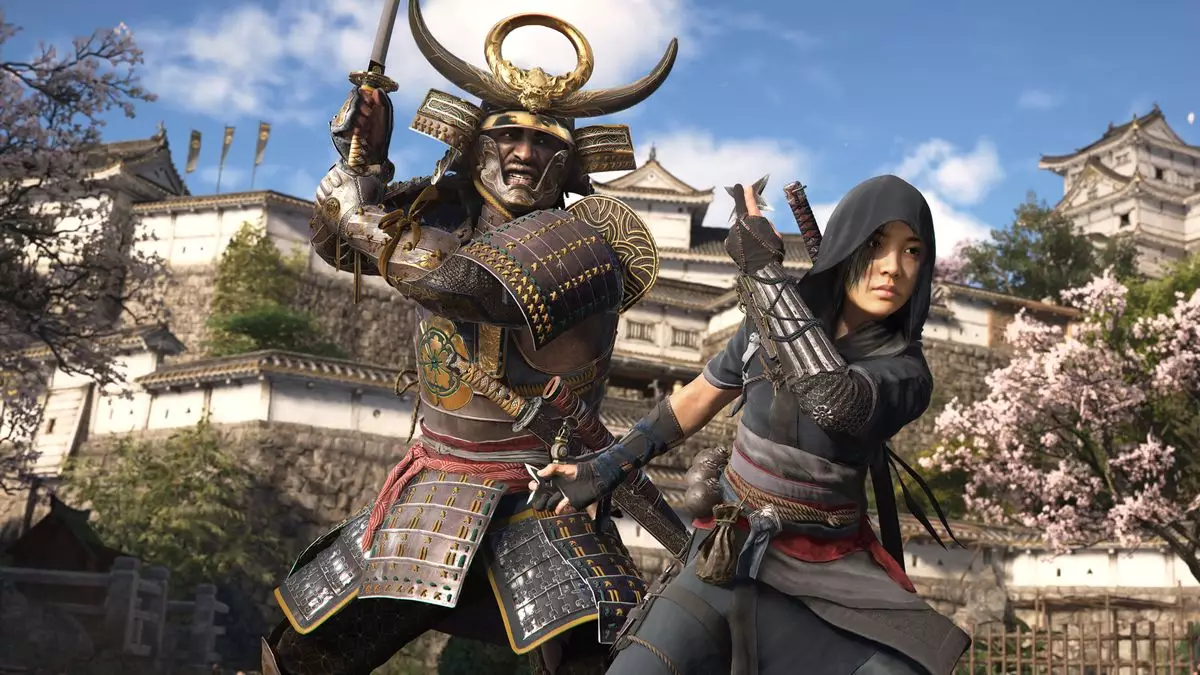In Ubisoft’s latest installment of the Assassin’s Creed series, Shadows, the development team has effectively harnessed the dual-protagonist gameplay model to create two distinct character experiences. Director Charles Benoit provided insight into the innovative combat mechanics that differentiate protagonists Yasuke and Naoe, each offering a unique twist on the foundational fighting style. This differentiation caters to various player preferences, blending hack-and-slash action with stealth-based strategies, which enriches the overall gameplay experience.
Protagonist Profiles: Yasuke vs. Naoe
Yasuke, equipped with a stalwart build, embodies the characteristics of a classic samurai. His proficiency with heavy weaponry such as katanas and rifles allows him to engage enemies with brute strength. In contrast, Naoe brings a nimble and cunning approach to battles, leveraging silent assassination techniques and crowd control tools like the hidden blade and ball-and-chain. This diversity in fighting styles not only aids in character immersion but also demands that players adapt their strategies based on whom they choose to play.
Benoit’s commentary underscores the importance of shared core mechanics in both characters, such as quicker light attacks and fundamental defensive maneuvers. However, it’s the nuanced variations in their abilities that spark a genuinely different feel when engaging enemies. Yasuke can stand defensively behind his considerable weaponry, using it to block incoming attacks, while Naoe’s agility is her primary defense. Her capability for executing a quick dodge-roll presents a more elusive fighting style than her counterpart, creating contrast that is central to the gameplay dynamics.
Encounters Shaped by Character Choice
Adding another layer to the combat experience is the way NPCs respond to each character. According to the developers, Ashigaru Soldiers, who make up a significant portion of the enemy forces, exhibit varying behaviors based on whether players control Yasuke or Naoe. This responsive AI creates a more immersive world where character identity directly influences gameplay. The soldiers display trepidation towards Yasuke, potentially recognizing his formidable presence, while showing more aggression towards Naoe, perhaps due to stereotypes about smaller figures or femininity.
Such character-specific interactions hint at deeper narratives and world-building elements woven into the game, which could encourage players to explore gameplay strategies that align with their protagonist’s strengths. Stealth remains a compelling option when playing as Naoe, emphasizing patience and subtleness, while Yasuke invites players to engage enemies head-on, challenging them to wield power efficiently in front-line combat.
Assassin’s Creed Shadows is poised to revitalize combat interactions within the franchise through its thoughtful dual-protagonist system. The interplay of Yasuke and Naoe’s capacities invites players to revel in diverse gameplay styles tailored to their preferences. By considering not just how to fight but also how to be perceived in the game’s world, Shadows introduces a compelling narrative element that enriches the Assassin’s Creed universe. As players prepare to encounter the intricacies of combat and character dynamics, Shadows seems set to deliver a memorable experience that expands the very essence of what it means to participate in the saga of the Assassins.

